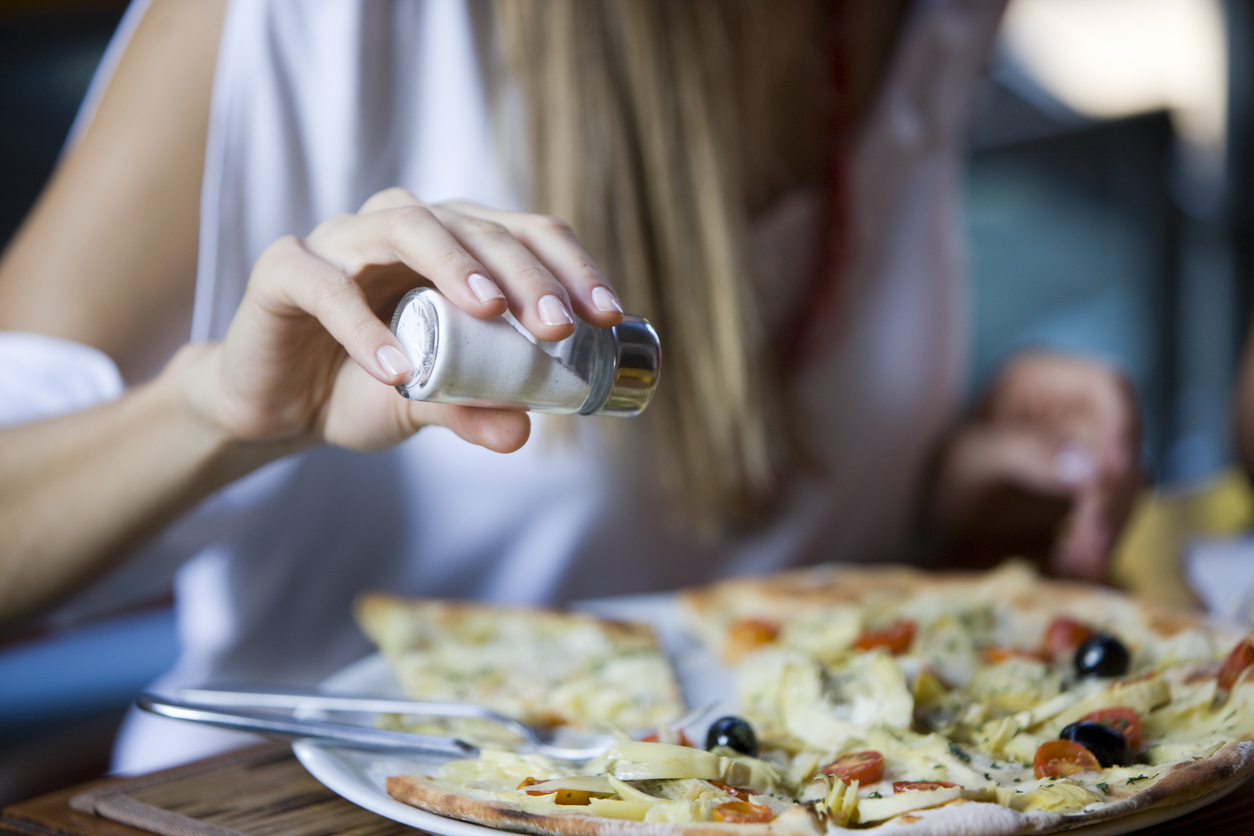Excessive salt intake causes an increase in arterial pressure, with a consequent increase in the risk of serious cardiovascular diseases linked to arterial hypertension (such as myocardial infarction and cerebral ictus). It is also linked to other chronic and degenerative diseases, such as digestive system tumors (in particular, stomach tumors), osteoporosis, and chronic kidney disease.
Pay Attention to “Hidden Salt”
On the occasion of the Campaign, the Italian Association for Dietetics and Clinical Nutrition highlighted the risks that “hidden salt” poses in the typical lunch-break dishes, and provided some tips to reduce the use of salt in cooking. We asked Doctor Manuela Pastore, dietician at Humanitas.
Some typical lunch-break dishes, even though they seem to be light, may hide high sodium quantities (especially in their ingredients and seasonings). Such foods are burgers, sandwiches, piadinas, rice and pasta salads, caesar salads.
Almost every food has some natural salt content, even vegetables, although it is absent from fruit. Salt is often difficult to detect and locate, and in theory we should not add it to foods, but we are so accustomed to it that we have a hard time avoiding it. However, it is important to reduce our salt intake, and little by little our taste buds will adapt to new flavors – even though at the beginning they may seem less tasty or salt less.
How to Reduce Salt Intake
- Choose bread with a reduced salt content.
- Reduce or avoid seasonings such as soy sauce, ketchup or mustard.
- When cooking pasta, add less salt than usual and only when the water just started boiling.
- Use herbs, spices, lemon and vinegar to season vegetables, meat and fish.
- Eat fruit or yogurt as a snack, instead of candy bars or ready-made snacks.
- Do not add salt to dishes in bars or restaurants (first courses, second courses, single courses, cooked or seasoned side courses), and do not add it to the dishes you cooked.
-
3,400 Physicians
-
110,400 Annual surgeries
-
190,400 Annual Inpatient Admissions
-
928,000 Patients


